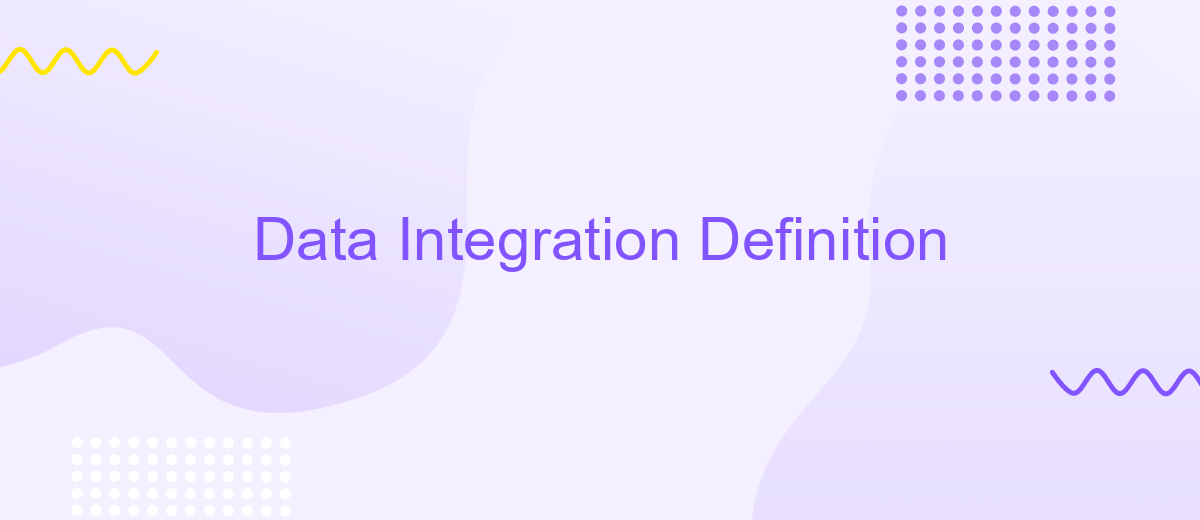Data Integration Definition
Data integration is the process of combining data from different sources to provide a unified view. It plays a crucial role in modern business environments, enabling organizations to make informed decisions by consolidating information from various databases, applications, and systems. This article explores the definition, importance, and methods of data integration, highlighting its impact on data management and analytics.
Definition
Data integration is the process of combining data from different sources to provide a unified view. This practice is essential for businesses that rely on diverse data sets to make informed decisions. By integrating data, organizations can enhance their analytics capabilities, streamline operations, and improve data consistency.
- Data Consolidation: Merging data from multiple sources into a single repository.
- Data Transformation: Converting data into a common format for seamless analysis.
- Data Cleaning: Removing inconsistencies and ensuring data quality.
- Data Loading: Inserting integrated data into a target system.
One effective tool for data integration is ApiX-Drive. This service allows users to automate data transfer between various platforms without the need for complex coding. By leveraging ApiX-Drive, businesses can easily set up integrations, ensuring that data flows smoothly across different systems, thereby enhancing operational efficiency and decision-making processes.
Benefits

Data integration offers numerous benefits, significantly enhancing the efficiency and accuracy of business operations. By consolidating data from various sources into a single, unified view, organizations can make more informed decisions, streamline workflows, and improve overall productivity. This integration reduces the time and effort required to gather and analyze data manually, minimizing errors and ensuring that stakeholders have access to real-time, accurate information.
Furthermore, data integration solutions like ApiX-Drive simplify the process of connecting disparate systems and applications. ApiX-Drive provides a user-friendly platform that allows businesses to automate data transfers and synchronize information seamlessly. This not only reduces the burden on IT departments but also enables non-technical users to set up integrations effortlessly. As a result, companies can respond more quickly to market changes, enhance customer experiences, and drive innovation by leveraging integrated data insights.
Challenges

Data integration is a critical process for organizations aiming to consolidate information from various sources. However, it presents several challenges that can hinder its effectiveness and efficiency.
- Data Quality: Ensuring the accuracy, completeness, and consistency of data from different sources can be difficult.
- Compatibility Issues: Integrating data from diverse systems often involves resolving compatibility issues, including different data formats and protocols.
- Scalability: As the volume of data grows, maintaining performance and scalability becomes a significant challenge.
- Security and Compliance: Protecting sensitive information and complying with regulations is crucial during the integration process.
- Cost: The financial investment required for data integration tools and resources can be substantial.
To address these challenges, organizations can leverage services like ApiX-Drive, which facilitate seamless data integration by providing user-friendly tools and automation capabilities. By utilizing such platforms, businesses can streamline the integration process, ensuring high data quality, compatibility, and security while reducing costs and improving scalability.
Tools and Technologies

Data integration involves combining data from different sources to provide a unified view. This process requires various tools and technologies to efficiently manage, transform, and synchronize data across systems. The right tools can significantly enhance the accuracy and speed of data integration.
Several tools and technologies are essential for effective data integration. These include ETL (Extract, Transform, Load) tools, data replication software, and cloud-based integration platforms. Each tool serves a specific purpose in the integration process, ensuring seamless data flow and consistency.
- ETL Tools: Talend, Informatica, Apache Nifi
- Data Replication Software: HVR, Fivetran, Qlik Replicate
- Cloud Integration Platforms: ApiX-Drive, Zapier, MuleSoft
ApiX-Drive, for instance, offers a user-friendly interface for setting up integrations without coding. It supports numerous applications and automates data transfer, making it an excellent choice for businesses looking to streamline their data workflows. By leveraging these tools, organizations can ensure their data integration processes are both efficient and reliable.


Best Practices
Effective data integration requires a clear strategy and adherence to best practices. Start by identifying the specific data sources and the type of data you need to integrate. Establish a standardized data format to ensure consistency across systems. Utilize robust data mapping techniques to align data fields from different sources, and validate the data to prevent errors. Regularly monitor and update your integration processes to adapt to any changes in data sources or business requirements.
Leveraging integration platforms like ApiX-Drive can significantly streamline the integration process. ApiX-Drive offers a user-friendly interface and supports a wide range of data sources, making it easier to automate data workflows. It also provides real-time synchronization, ensuring that your data is always up-to-date. By utilizing such tools, you can reduce manual efforts, minimize errors, and enhance the overall efficiency of your data integration efforts.
FAQ
What is data integration?
Why is data integration important?
What are the common challenges in data integration?
How can businesses automate their data integration processes?
What are the key components of a data integration solution?
Time is the most valuable resource in today's business realities. By eliminating the routine from work processes, you will get more opportunities to implement the most daring plans and ideas. Choose – you can continue to waste time, money and nerves on inefficient solutions, or you can use ApiX-Drive, automating work processes and achieving results with minimal investment of money, effort and human resources.

